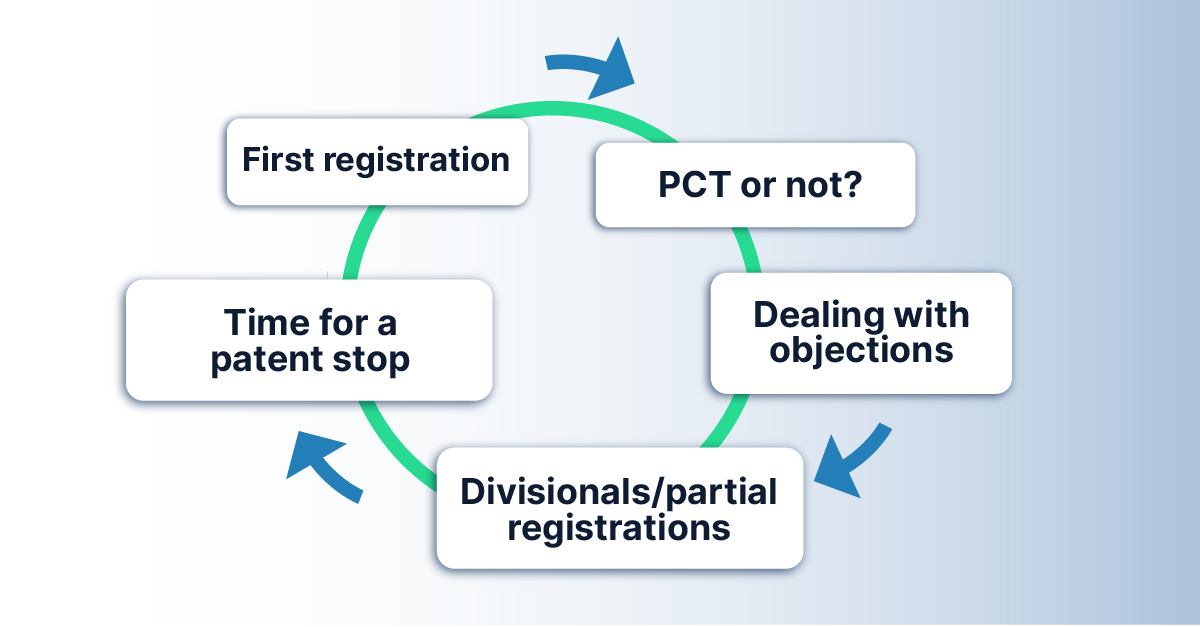The Patent Lifecycle

Patents are crucial instruments for protecting intellectual property. However, their lifecycle is complex and requires strategic thinking. Here is a comprehensive guide to making the most of your patent:
First Filing
The initial filing of a patent is a crucial step. You should ensure that your idea is clear and unique before starting the process. The following points must be addressed during the first filing:
- Complete Disclosure: The invention must be described clearly and comprehensively.
- Problem Identification and Solution: The technical problem and its solution must be clearly presented.
- Prior Art Search: Check if similar inventions already exist.
- Correct Claim Formulation: Draft claims clearly and precisely.
- Professional Support: Seek professional assistance to fulfill all legal requirements.
Decision on Further Action: PCT or Not?
After the initial filing, you must decide whether to expand protection internationally. You can either file additional patent applications directly in individual countries or file an international application under the Patent Cooperation Treaty (PCT). The PCT process provides an additional year of protection and allows more time to decide on additional countries. Additionally, the PCT procedure involves an examination that provides solid feedback on the patentability of the invention.
Handling Objections
During the application process, the patent office may raise objections or examine objections from competitors to determine their validity. If an objection is justified and the patent office finds the patent invalid, the patent may be revoked. It is important to respond appropriately to objections against your patent application. For example, patent claims may need to be adjusted and revised to improve clarity and precision.
Divisionals/Partial Applications
In some cases (e.g., with multiple related inventions), it may be useful to file a partial application (also known as a "divisional application") to split a part of your patent application and pursue it as a separate patent. This allows you to extend protection to different aspects of your invention. Additionally, a divisional application can be used to expedite the patenting process or clarify the patentability of certain aspects without affecting the entire original filing process.
Time to Abandon a Patent
A patent should be stopped and abandoned when the costs of maintaining the patent or enforcing its rights are no longer justified, and the benefits of patenting are no longer given. This may occur if the technology becomes outdated, the patent is no longer economically viable, or market demand for the invention declines significantly. It may also be advisable to stop a patent if there are too many legal challenges or enforcement difficulties that outweigh the benefits of patenting. Ultimately, the decision to abandon a patent should be carefully considered based on a comprehensive analysis of current circumstances.
With Patent Cockpit, you can filter out which patents are no longer profitable with just a few clicks, signaling the end of their lifecycle. Don't waste financial resources on outdated patents - start managing your patent portfolio with our software today.
< Back to all blog posts